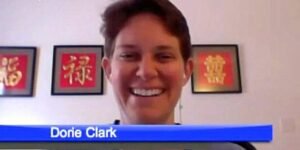
Should You Write a Resume With AI? A Recruiting Expert Weighs In
Generative AI has been available for little more than a year. However, it’s already redefining recruiting, as job-seekers race to find and land new career

Generative AI has been available for little more than a year. However, it’s already redefining recruiting, as job-seekers race to find and land new career

A career, by definition, is something that develops over an extended period of time. In other words, a successful career is not born — it

People often hate the idea of networking, either because they’re introverts by nature, they’re afraid of rejection, or they don’t want to seem pushy, self-absorbed,

Getting hired for a job can be one of the most tiresome processes. Often, it feels especially daunting when you don’t actually have a job
No one’s career path is ever a straight road. Invariably we all experience some more windy routes along the way. That doesn’t mean, however, that one can’t

How would you describe your ideal employer? Here’s one factor that many job seekers overlook — but it has potential to make all the difference.

We all have unique talents and a purpose. How can we create harmony between these defining characteristics and our professional pursuits?

What happens when nearly 50,000 job seekers speak out about their candidate experience? Great insights surface! Let’s discuss at #TChat events

Are you a geek? Your job prospects may be stronger than you think. Here are 5 ways your uniqueness can propel your career

We know that mobile tools are rapidly transforming recruitment. But what about the rest of the hiring process? #TChat talks about why employers need to get ahead of the curve

Is mobile recruiting here to stay? How can employers make the most of this opportunity? Highlights from our community events

TalentCulture is thrilled to be featured on Forbes List of “Best Websites For Your Career.” Why? In the spirit of lists everywhere, here are 3 reasons…

In the social era, there’s nowhere to hide. 80 million times a day, someone searches on Google for a name. Are you positioned for strength?

Asking key people to discuss your strengths and weaknesses can give you the perspective you need to reinvigorate your career. Personal branding expert, Dorie Clark, explains

Is your professional persona an accurate reflection of you? How can you reinvigorate your personal brand for better results? Let’s talk about it…
Increasingly, career paths involve many steps and diverse experiences. How can individuals and employers leverage this for the better?
Social media has made our lives open books. But what are the implications for how we manage our individual “brands”? The TalentCulture community shared opinions and ideas…
Online endorsements can carry a lot of weight. But LinkedIn’s recent “endorsements” feature has the #TChat crowd asking: “What is the point of diminishing returns?” Let’s discuss!
“All I know is that sometimes you have to be wary Of a miracle too good to be true All I know is that sometimes
Originally posted by Charles Purdy on MonsterThinking Blog If you’re in an HR or recruiting position, you likely interact with a lot of job seekers
Weekends aren’t the usual time for companies to drop market-making news, but it happened this weekend, when Monster announced the launch of BeKnown, a networking
Originally posted by Charles Purdy, one of #TChat’s moderators, on Monster Thinking Blog It’s not just that many recent grads are new to the world of work

Informational interviews sound boring, ineffective and hard to get. But that doesn’t need to be true. In fact, they can increase your chances of finding and being considered for jobs, especially the “hidden” ones. Here are tips to make it work for you…
The hiring process is rapidly evolving. If you’re seeking a job in today’s tough business environment, you’ll need to stay ahead of the curve. Here are some tips to help you look like you’re at the front of the pack…
These days, job seekers need to stand out from the crowd. These tips help you position yourself as an expert in your profession.